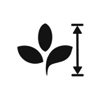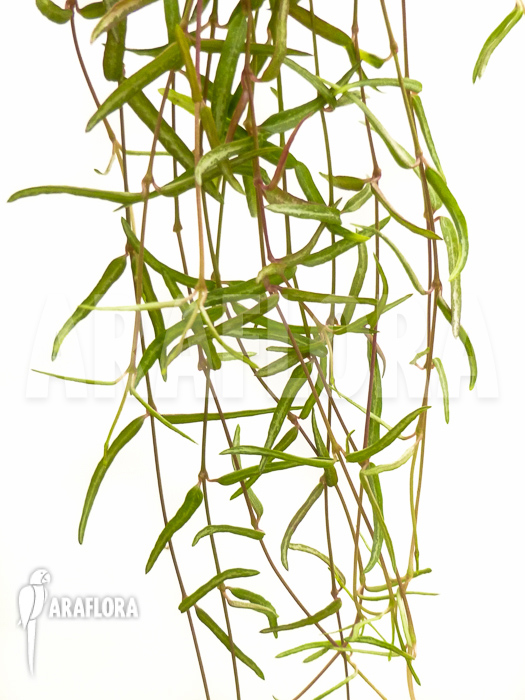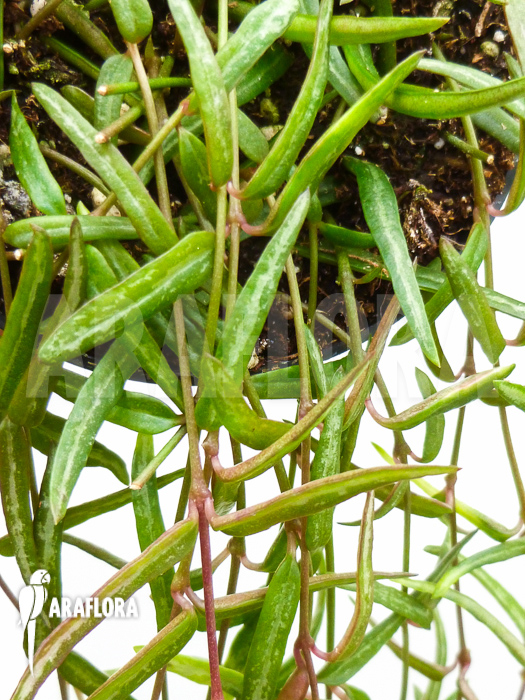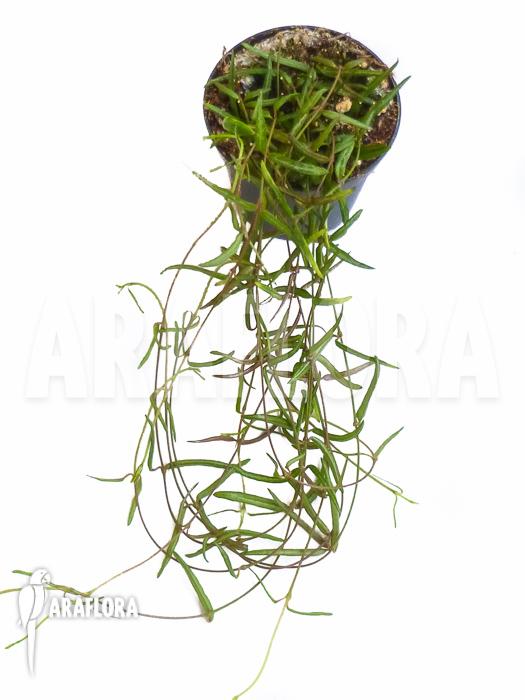Ceropegia debilis - SuCa105
Ceropegia debilis - SuCa105
Ceropegia debilis often is regarded as a sub species of Ceropegia Linearis. As, as the name 'linearis' suggests, Ceropegia debilis has thin, needle-like leaves which combined with long stringy stems, give the plants its striking appearance.
Currently not in stock
€ 0,00
Keep me up to date?
Araflora will inform you as soon as the product is available again. Please fill in your e-mail address and we will let you know as soon as the product is back in stock. You will get an e-mail message when the product is available again. Unfortunately we cannot say how long this will be or what the price is likely to be.

Receive an e-mail when new stock of this plant arrives.
Share this plant? Press on one of the following icons.
Ceropegia debilis is endemic to Malawi and Zimbabwe, where it is found in dry areas. The needle-like leave reduce the loss of moisture by evaporation. Under the ground, Ceropegia debilis has large tubers that store moisture and nutrients. In the wet season, Ceropegia debilis forms the little parachute-shaped flowers that are typical of Ceropegias. These flowers give off a subtle fragrance that attracts small flies looking for a place to lay their eggs. When a fly crawls into the flower, an oily substance ensures it slides down the corolla tube and becomes trapped. Small hairs pointing downwards prevent it from escaping. The flowers contain nectar and cells permeable to sunlight, fooling the fly into think there is an exit towards the light. When the fly starts to consume the plant's nectar it becomes covered in pollen. After a couple of days the flower changes position and the small hairs point in the opposite direction, allowing the fly to escape. It can then start pollinating other flowers.


Ceropegia debilis enjoys a bright spot in a living room but not direct sunlight. It requires feeding sporadically. The soil must be allowed to dry out between watering sessions and must not stay moist for long periods. Ceropegia debilis thrives at a temperature above 10 degrees Celsius.







 10 cm
10 cm
 5 cm
5 cm












